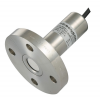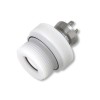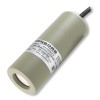Marine approved hydrostatic liquid level sensors for use in marine environments.
These sensors are designed to be lowered into a tank or mounted to the outside of the tank in a wet environment. The sensors are suitable for measuring the level of seawater ballast, diesel fuel, wastewater and liquid cargo tanks.
Products
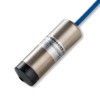 LMK458 Marine Approved Hydrostatic Level Transmitter - Marine approved level transmitter with 4-20mA output for measuring level of contents inside ship ballast, fuel, liquid cargo or wastewater tanks
LMK458 Marine Approved Hydrostatic Level Transmitter - Marine approved level transmitter with 4-20mA output for measuring level of contents inside ship ballast, fuel, liquid cargo or wastewater tanks LMK 487 Submersible Ballast Tank and Draught Level Pressure Transmitter - A 22mm diameter titanium body seawater depth and level probe with a 4-20mA output with Lloyds and DNV-GL ship approval, for monitoring the quantity of ballast or the draft of a ship’s hull.
LMK 487 Submersible Ballast Tank and Draught Level Pressure Transmitter - A 22mm diameter titanium body seawater depth and level probe with a 4-20mA output with Lloyds and DNV-GL ship approval, for monitoring the quantity of ballast or the draft of a ship’s hull.
Applications
 Floating dry dock ballast tank 14ft range 4-20mA output submersible seawater level sensor - A seawater compatible liquid level sensor for submerging in a floating dry dock ballast tank and measuring the depth over a range of 0 to 14ft from the nose cone, and sending the corresponding 4-20mA signal through the submersible cable electrical connection.
Floating dry dock ballast tank 14ft range 4-20mA output submersible seawater level sensor - A seawater compatible liquid level sensor for submerging in a floating dry dock ballast tank and measuring the depth over a range of 0 to 14ft from the nose cone, and sending the corresponding 4-20mA signal through the submersible cable electrical connection. Desalination plant seawater feed tanks 5m range 4-20mA output submersible level sensor - A marine approved submersible seawater level sensor for submerging in desalination plant water tanks and measuring the depth over a range of 0 to 5m from the nose cone, and sending the corresponding 4-20mA signal through the submersible cable electrical connection.
Desalination plant seawater feed tanks 5m range 4-20mA output submersible level sensor - A marine approved submersible seawater level sensor for submerging in desalination plant water tanks and measuring the depth over a range of 0 to 5m from the nose cone, and sending the corresponding 4-20mA signal through the submersible cable electrical connection.
 9m 4-20mA ship fish storage seawater storage tank submersible level sensor
9m 4-20mA ship fish storage seawater storage tank submersible level sensor 6m deep ballast tank level transmitter with marine certificate
6m deep ballast tank level transmitter with marine certificate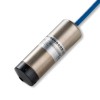 100 meter IP68 sea water level transmitter with Marine & ATEX approval
100 meter IP68 sea water level transmitter with Marine & ATEX approval DNV / GL marine certified submersible seawater level transmitter for 0-3 metre depth
DNV / GL marine certified submersible seawater level transmitter for 0-3 metre depth
- 20 foot deep submersible salt water level transmitter for marine use
- Hydrophone array submersible 200 meter seawater depth sensor
- Screw-in 2m height onboard marine vessel diesel tank base mount level sensor
Related Product and Application Guides
Related Help Guides
- Measuring liquid level in a sealed tank with a hydrostatic pressure sensor
- Using a screw-in or waterproof pressure transmitter to measure liquid level
- Measuring the volume of liquid in a horizontal cylinder tank
- Improve the electrical termination of vented submersible pressure sensors
- Difference between vented and non-vented water level measurement
- Determining water tank volume using hydrostatic pressure
- How to reduce submersible pressure sensor failures caused by moisture ingress
- Using absolute pressure sensors to measure hydrostatic level
- Determining the hydrostatic pressure range for a tank level sensor
- Considerations for monitoring Landfill Water Level
- Why are Submersible applications so demanding of Pressure Transducers?

